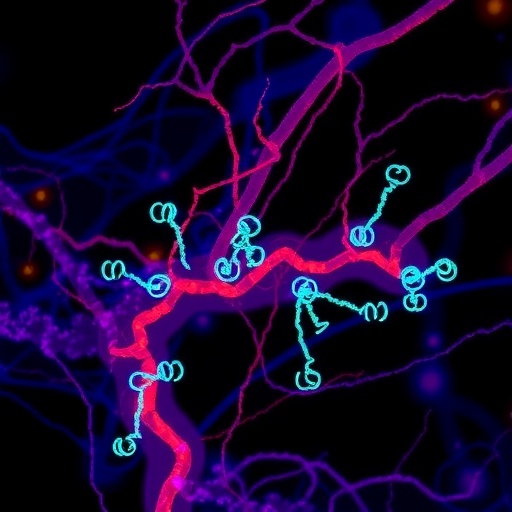
The integration of generative artificial intelligence (AI) into educational frameworks has ignited a transformative wave in various disciplines, particularly within biomedical engineering design. A recent publication by King and Lopour delineates a groundbreaking approach to harnessing generative AI for fostering critical thinking skills among students. Their focus centers around a novel learning module that promotes ideative processes, empowering budding engineers to not only think critically but also creatively in their design endeavors. This intersection of technology and education is not only timely but essential, given the rapid advancements in AI capabilities.
The educational landscape is evolving; faculty members are increasingly recognizing the necessity of integrating modern technologies into curricula. The authors argue that generative AI serves as a powerful catalyst for incubating innovative thought in engineering fields. Traditionally, engineering education has emphasized rote memorization and mechanical problem-solving. However, the landscape is shifting. King and Lopour advocate for a more dynamic approach where students engage with AI tools that stimulate non-linear thinking and exploration of new design paradigms, exponentially widening the scope of their creative potential.
Central to their research is the exploration of the pedagogical methods that best align with these AI tools. Unlike conventional learning techniques, which often isolate knowledge acquisition from practical application, the authors propose a model that seamlessly integrates the two. Students actively interact with generative AI, diving into a collaborative design experience that promotes experimentation and iteration. This process encourages students to confront challenges, reassess their strategies, and derive solutions not just from conventional wisdom but from the insights gleaned from advanced AI systems.
One of the most intriguing aspects of King and Lopour’s findings is the shift towards a more hands-on approach in education. The use of generative AI transforms passive learning into an active, participatory experience. Students become co-creators in their learning journey, which fosters a deep-rooted sense of agency and responsibility toward their design projects. This facilitates the development of essential skills such as adaptability, resilience, and critical analysis.
Moreover, the authors emphasize that the benefits of this approach extend beyond mere ideation. By engaging with generative AI, students are exposed to a wealth of interdisciplinary insights that enrich their understanding of problems and potential solutions. Biomedical engineering, a field inherently intertwined with advances in medical technology and patient care, stands to gain immensely from such integrative approaches. The enhanced collaboration between AI and human creativity may lead to groundbreaking solutions that address pressing healthcare challenges.
Consideration of ethical implications is another pivotal component of the discussion. As students engage in ideation supported by AI, they must grapple with the moral ramifications of their design choices. The authors note that this juxtaposition of innovative thinking with ethical considerations creates a more holistic educational experience. It encourages students to ponder not only the functionality of their designs but also their societal impact and relevance. As future leaders in biomedical engineering, this multifaceted training equips students to make informed, responsible decisions that resonate with societal needs.
The findings presented by King and Lopour underscore the importance of a careful implementation of generative AI within the educational framework. Effective training for educators is crucial, ensuring that they are well-versed in the AI tools being introduced to their students. This preparation must extend beyond technical skills; educators should also cultivate their own critical thinking and creativity to adequately model these attributes for their learners. When educators embody the principles they teach, the resulting learning environment becomes both a nurturing ground and a testing ground for innovation.
Looking forward, the potential for scalability in this learning model is profound. As AI technology continues to advance, educational institutions can build upon this foundation to devise even more sophisticated learning experiences. Imagine a world where students can collaborate with AI not just within the confines of the classroom, but in real-world contexts, working alongside experts and practitioners to tackle healthcare innovations. The implications for the future of biomedical engineering design and education are breathtaking.
King and Lopour’s work serves as a clarion call for educational institutions to embrace the inevitable drive toward technology-enhanced learning. By adopting generative AI methodologies, they advocate for a shift that not only elevates individual learning experiences but cultivates a culture of innovation within the engineering community. This transformation is not merely a response to technological trends; it marks a fundamental evolution in how education can engage with the tools shaping our world.
As this educational paradigm unfolds, students in biomedical engineering will emerge as not just consumers of knowledge but as informed creators ready to address complex challenges through innovative design. The interplay between human creativity and machine learning fosters an environment ripe for exploration, inquiry, and learning, paving the way for advancements that could revolutionize healthcare.
At its core, the research posits that fostering such critical thinking through generative AI is not an endpoint but a gateway. It challenges students to envision an array of possibilities, to question preconceived notions, and to iteratively refine their creative outputs. This continuous loop of inspiration, experimentation, and critical evaluation echoes the very nature of innovation in biomedical engineering. Adopting such an approach prepares future engineers who are not only adept at technical design but are also visionary thinkers equipped to navigate the complexities of tomorrow’s healthcare landscape.
In conclusion, the study by King and Lopour illustrates an inspiring fusion of technology and education, making a compelling case for integrating generative AI into the learning process. By prioritizing critical thinking and creativity, educational institutions can develop a new generation of biomedical engineers capable of effecting substantive change in healthcare. As we move forward into a world increasingly influenced by AI, the emphasis on innovative educational approaches will be paramount for cultivating the skill sets necessary to thrive in a rapidly evolving environment.
Subject of Research: The integration of generative AI in biomedical engineering education to foster critical thinking during design ideation.
Article Title: Fostering Critical Thinking During Use of Generative AI: A Novel Learning Module for Ideation in Biomedical Engineering Design.
Article References:
King, C.E., Lopour, B.A. Fostering Critical Thinking During Use of Generative AI: A Novel Learning Module for Ideation in Biomedical Engineering Design.
Biomed Eng Education (2025). https://doi.org/10.1007/s43683-025-00192-8
Image Credits: AI Generated
DOI: 10.1007/s43683-025-00192-8
Keywords: generative AI, biomedical engineering education, critical thinking, ideation, innovation, learning module, technology-enhanced learning.
Tags: advancing biomedical engineering skillscritical thinking in biomedical designdesign paradigms in engineering educationeducational frameworks with AIenhancing student engagement with technologyfostering creativity in engineeringGenerative AI in educationinnovative engineering educationintegrating AI into curriculanon-linear thinking in designpedagogical methods for AI toolstransformative learning with technology




